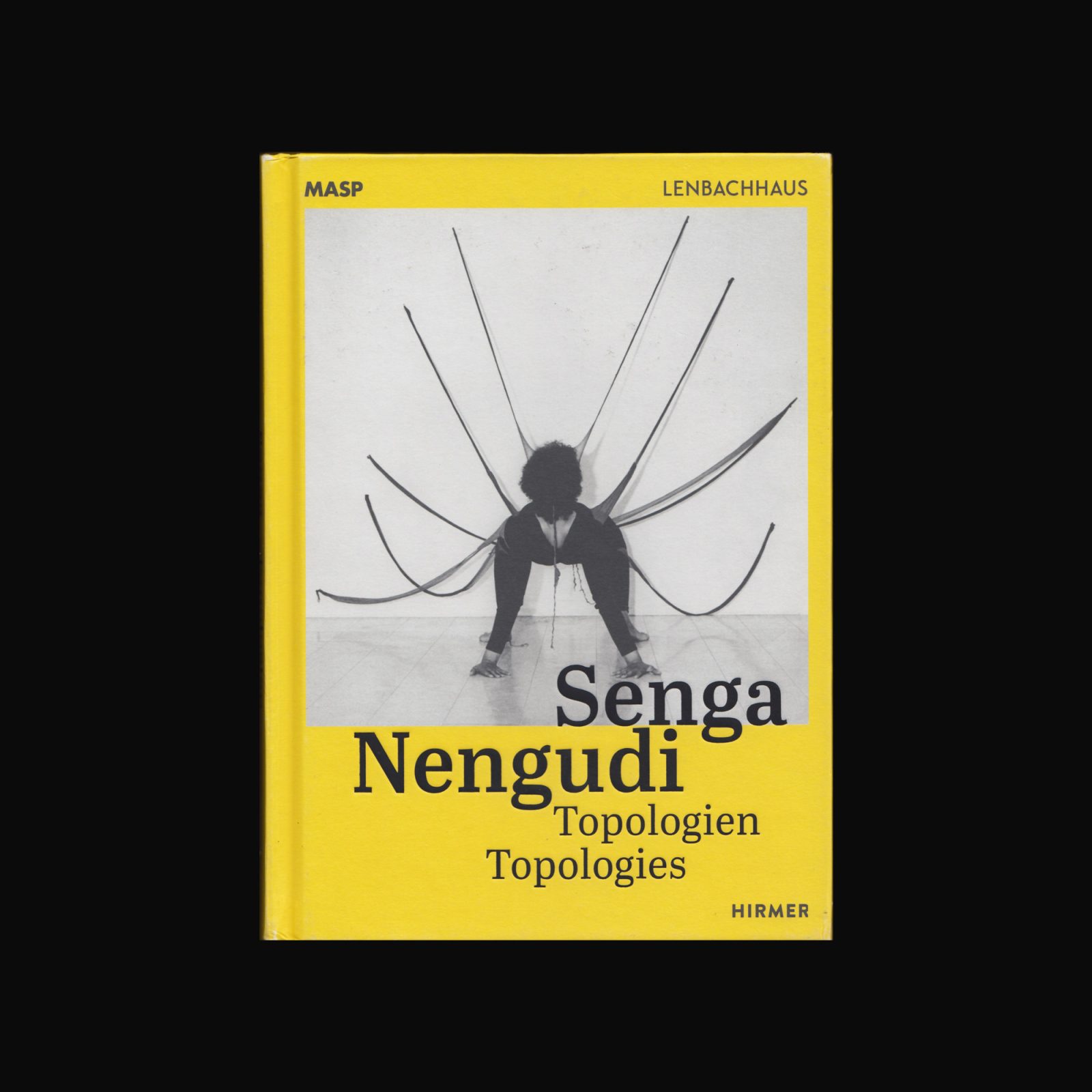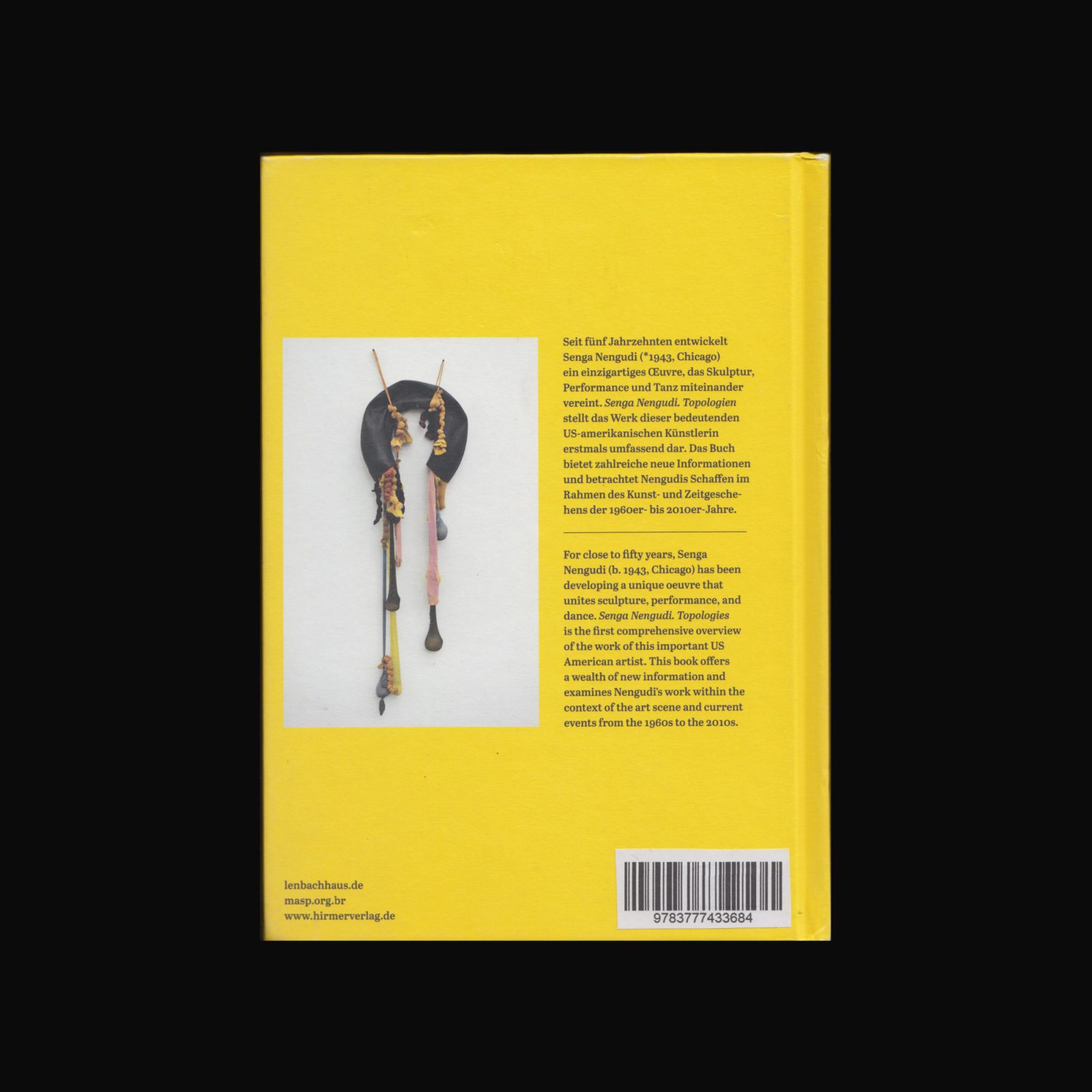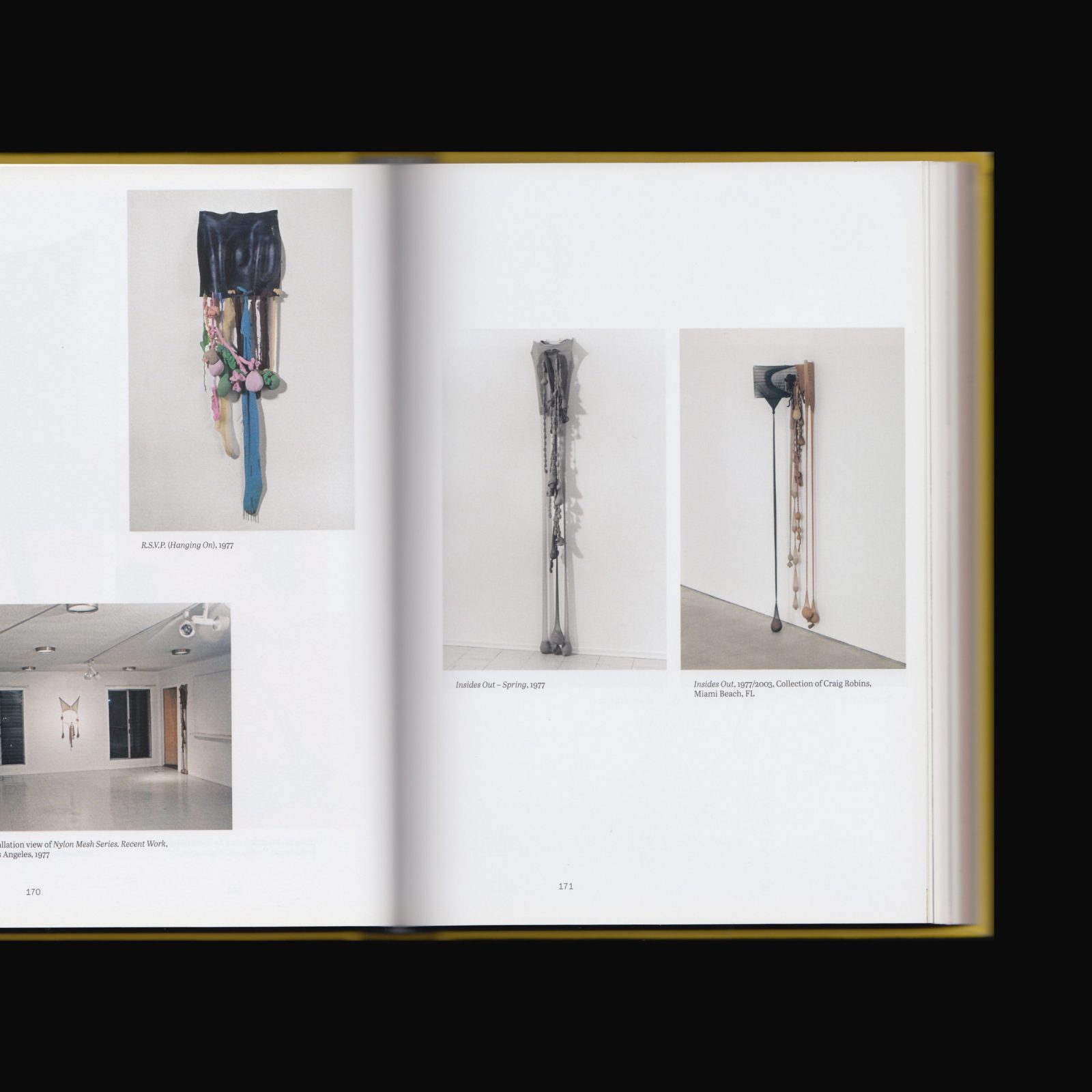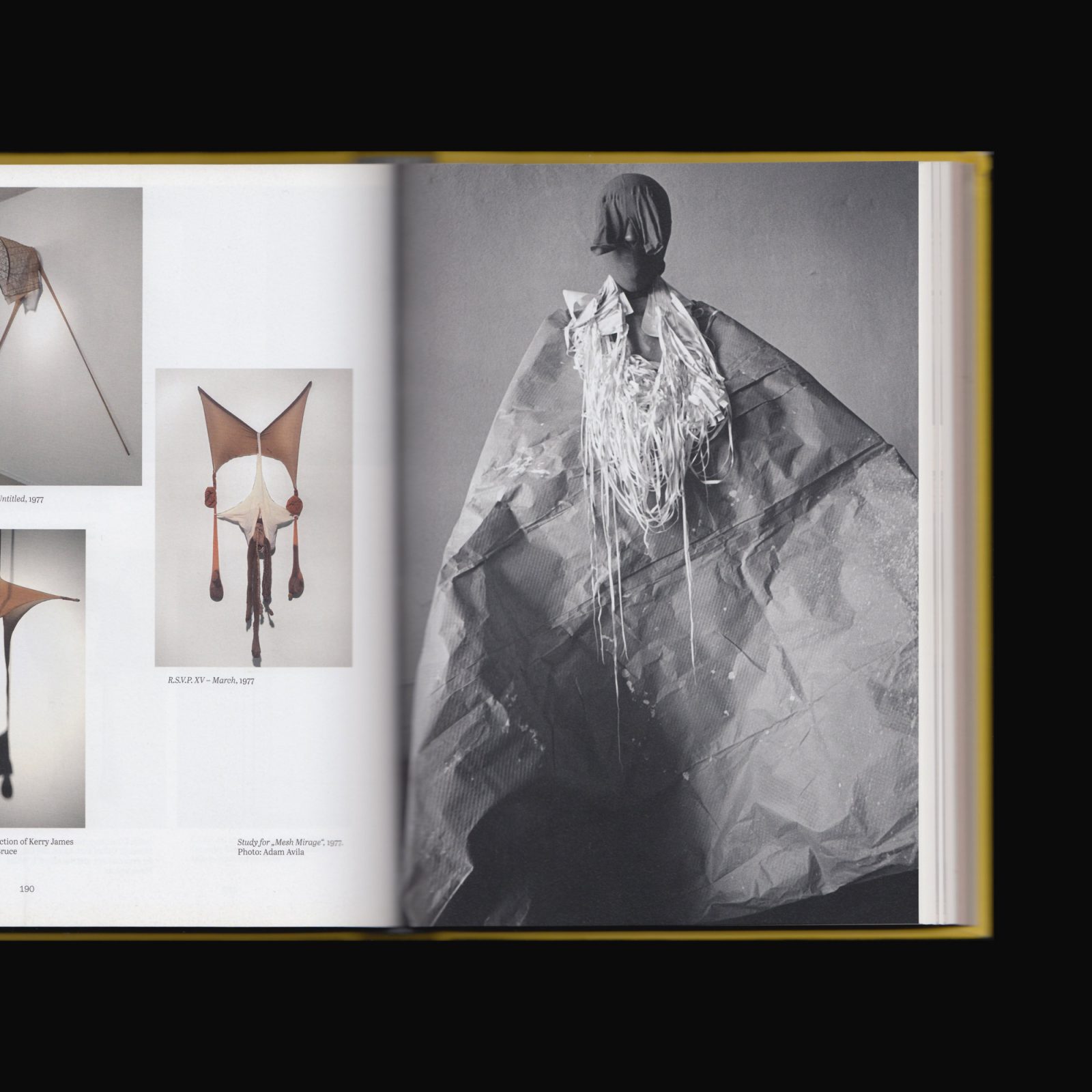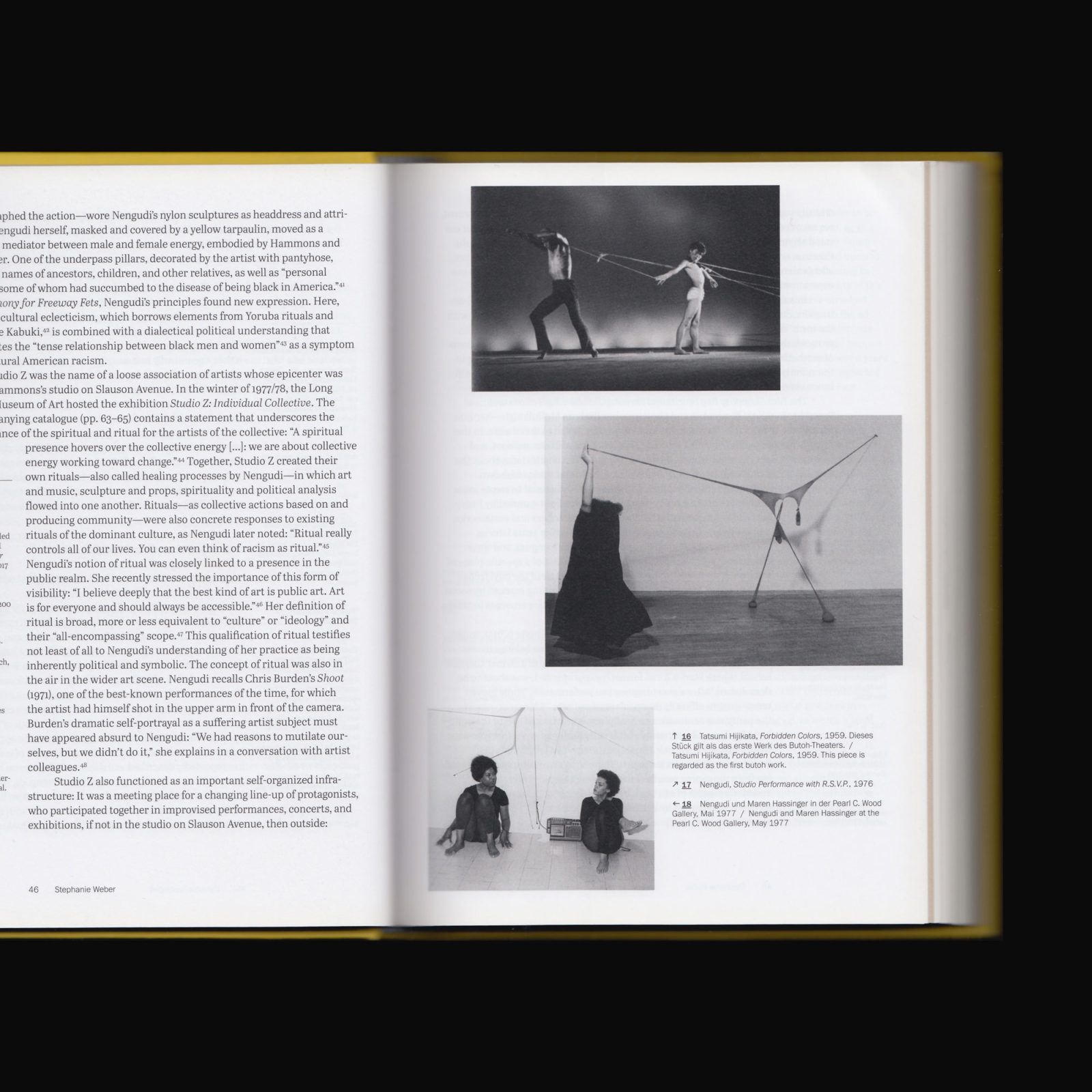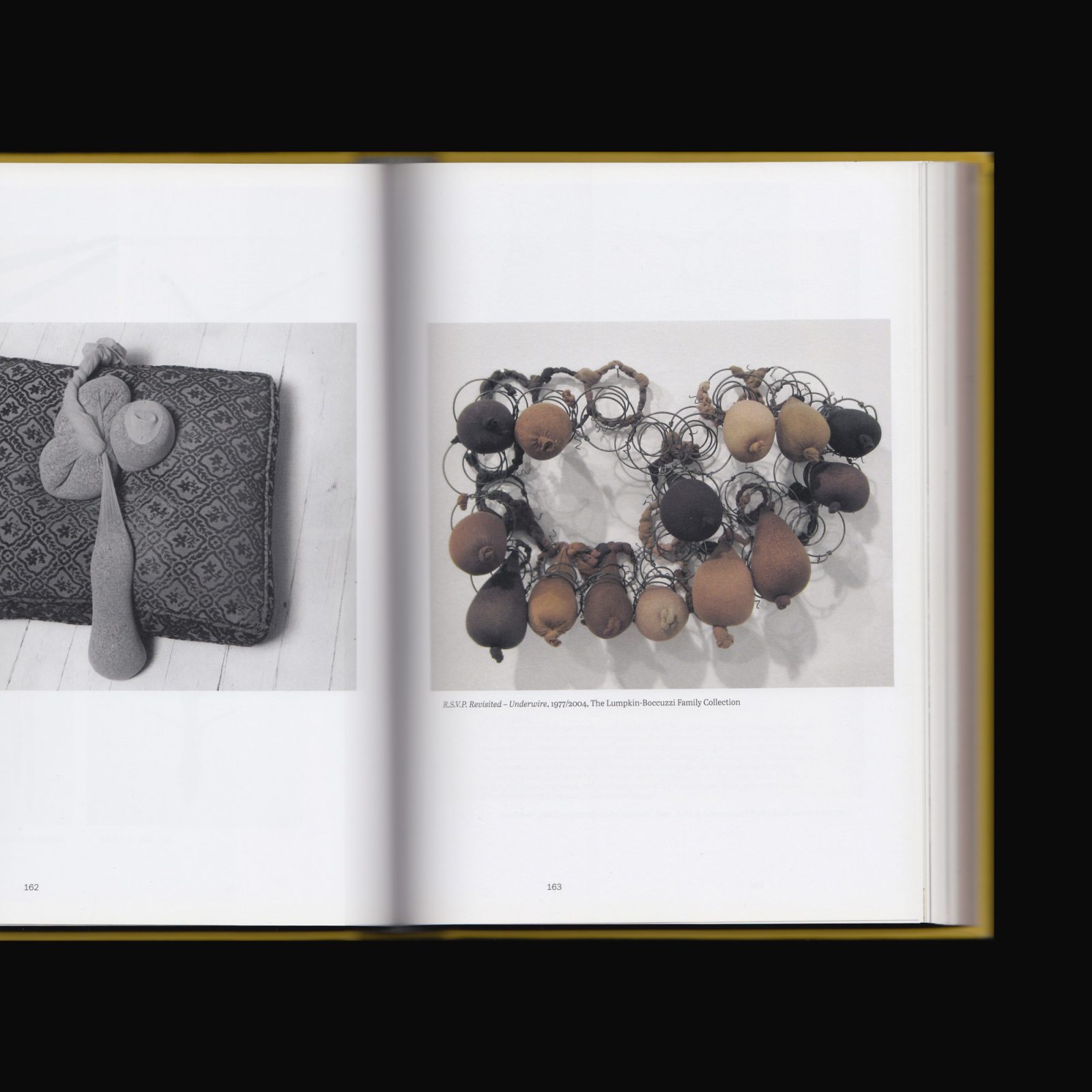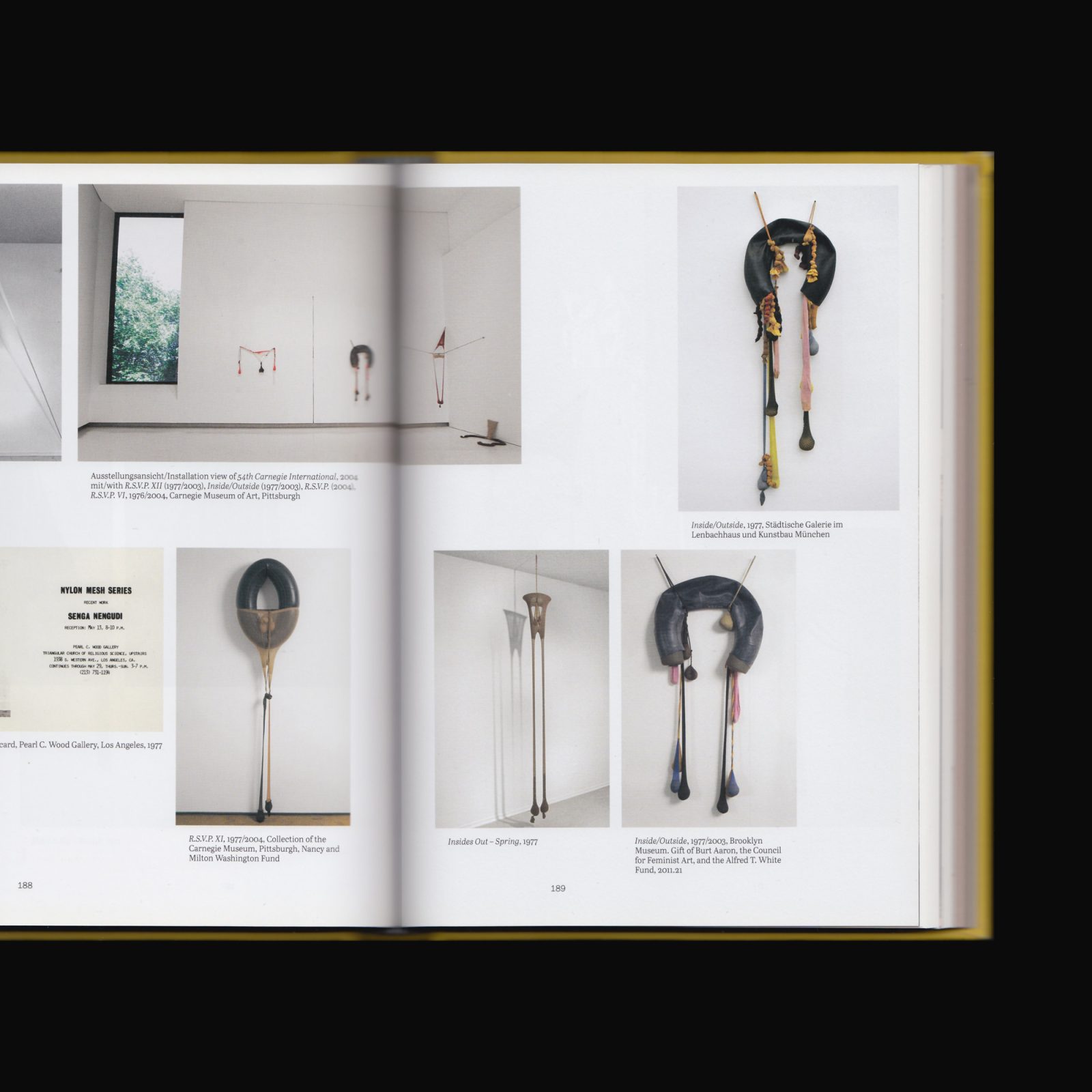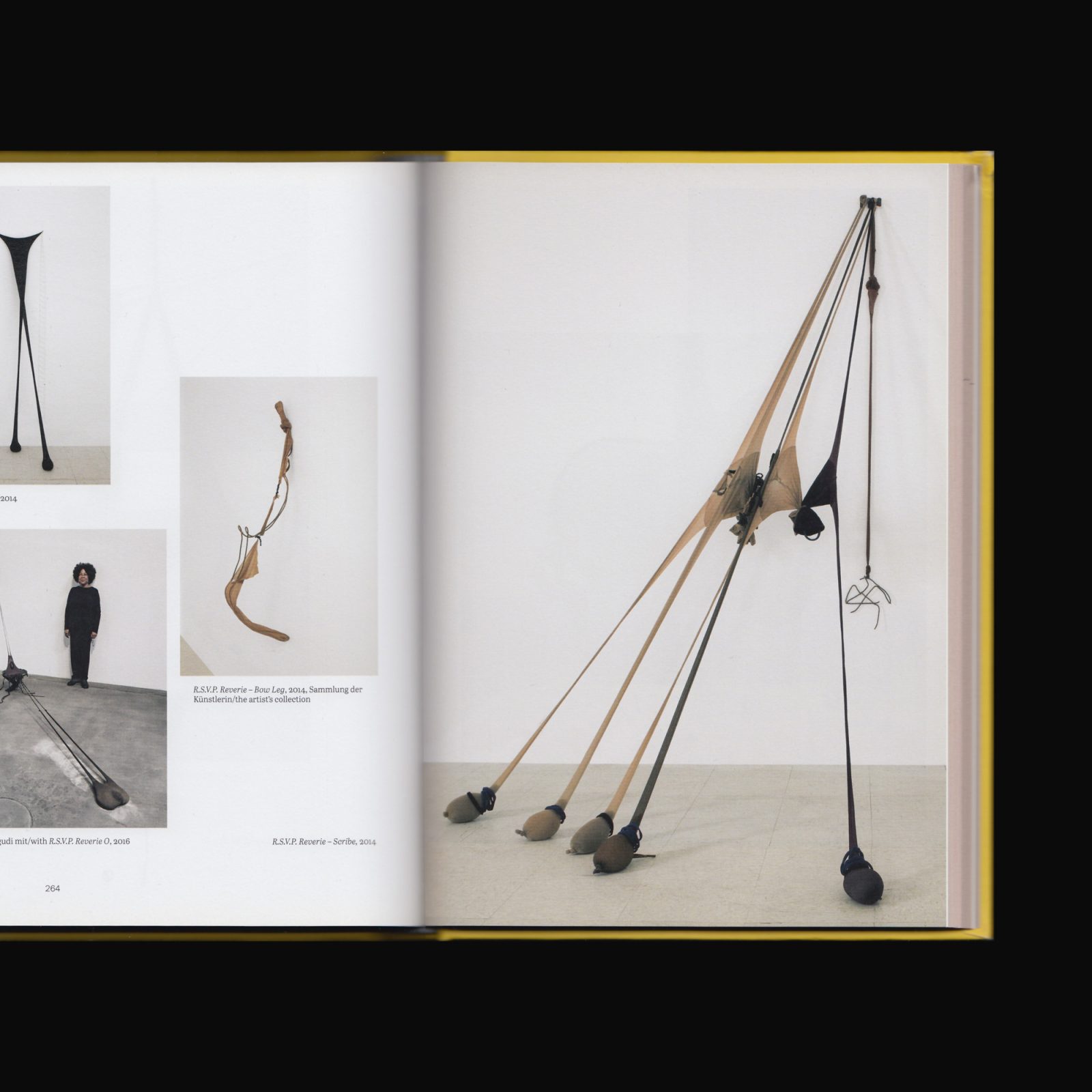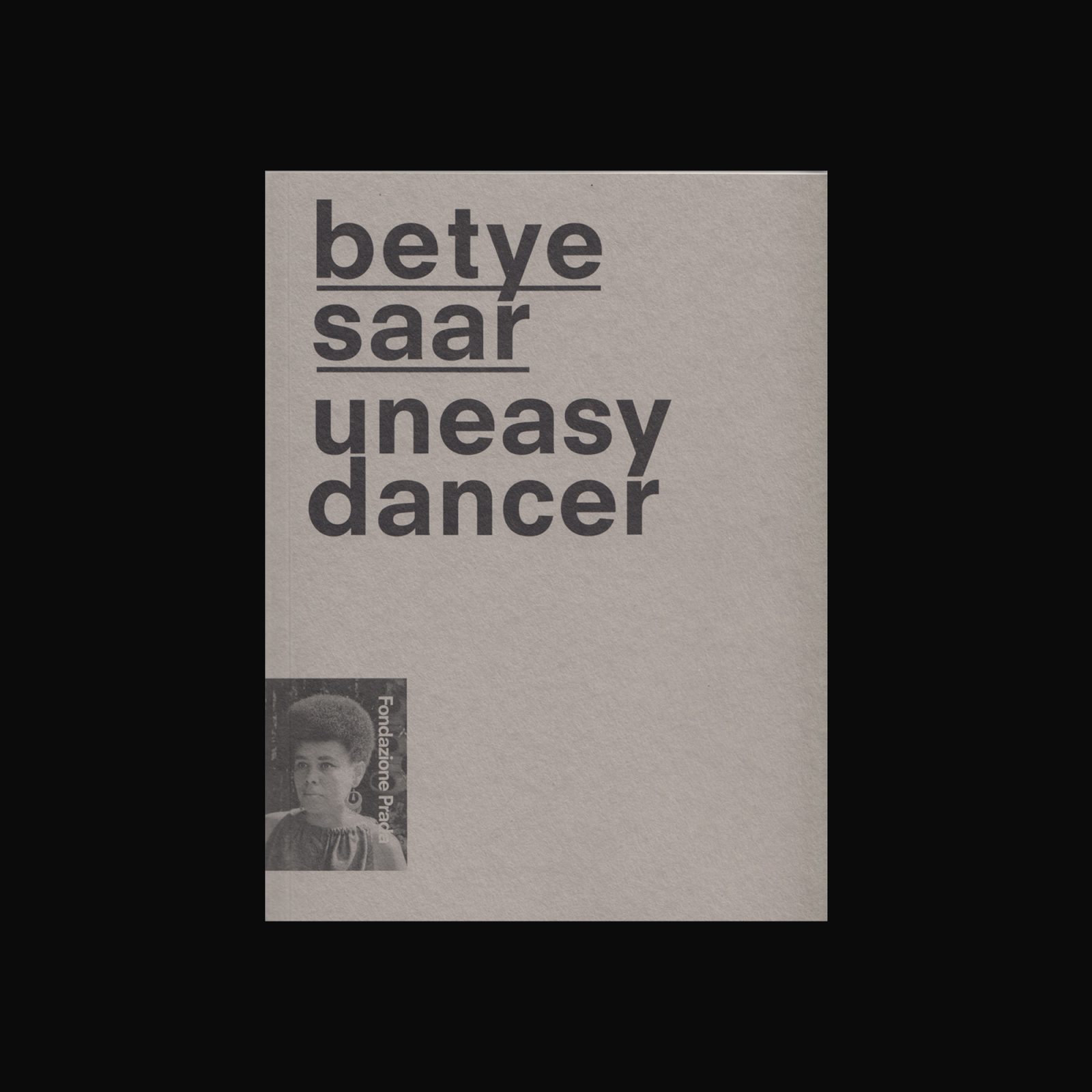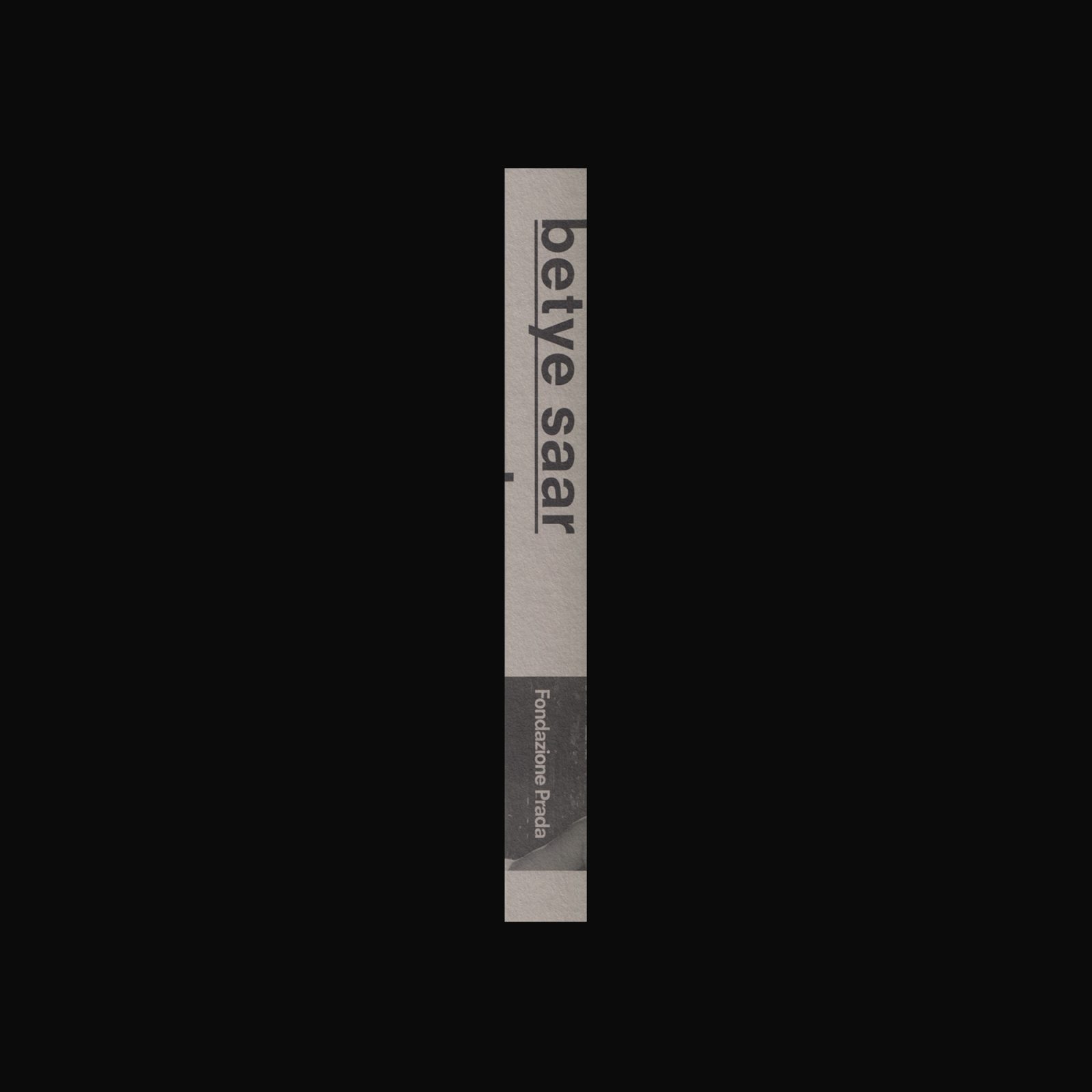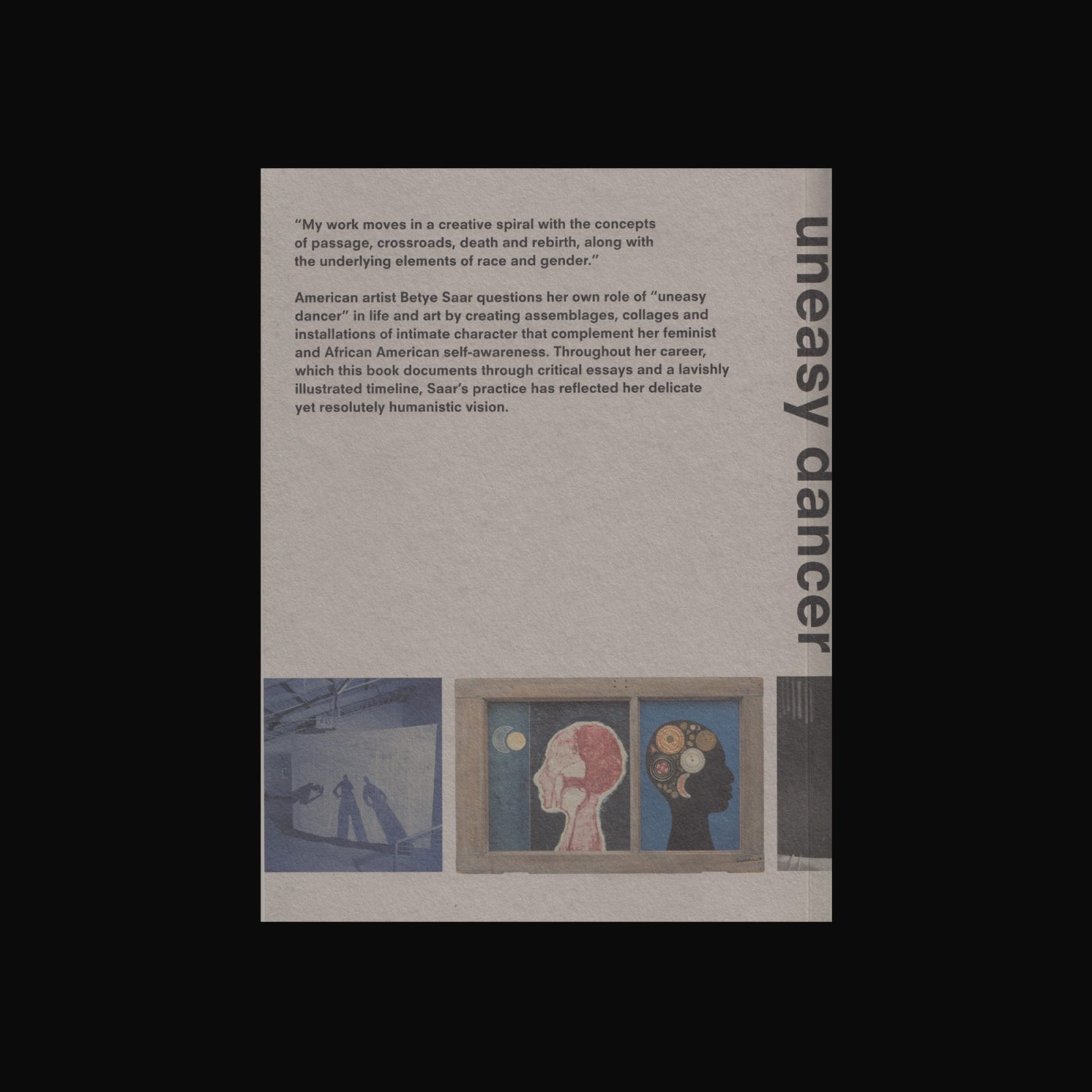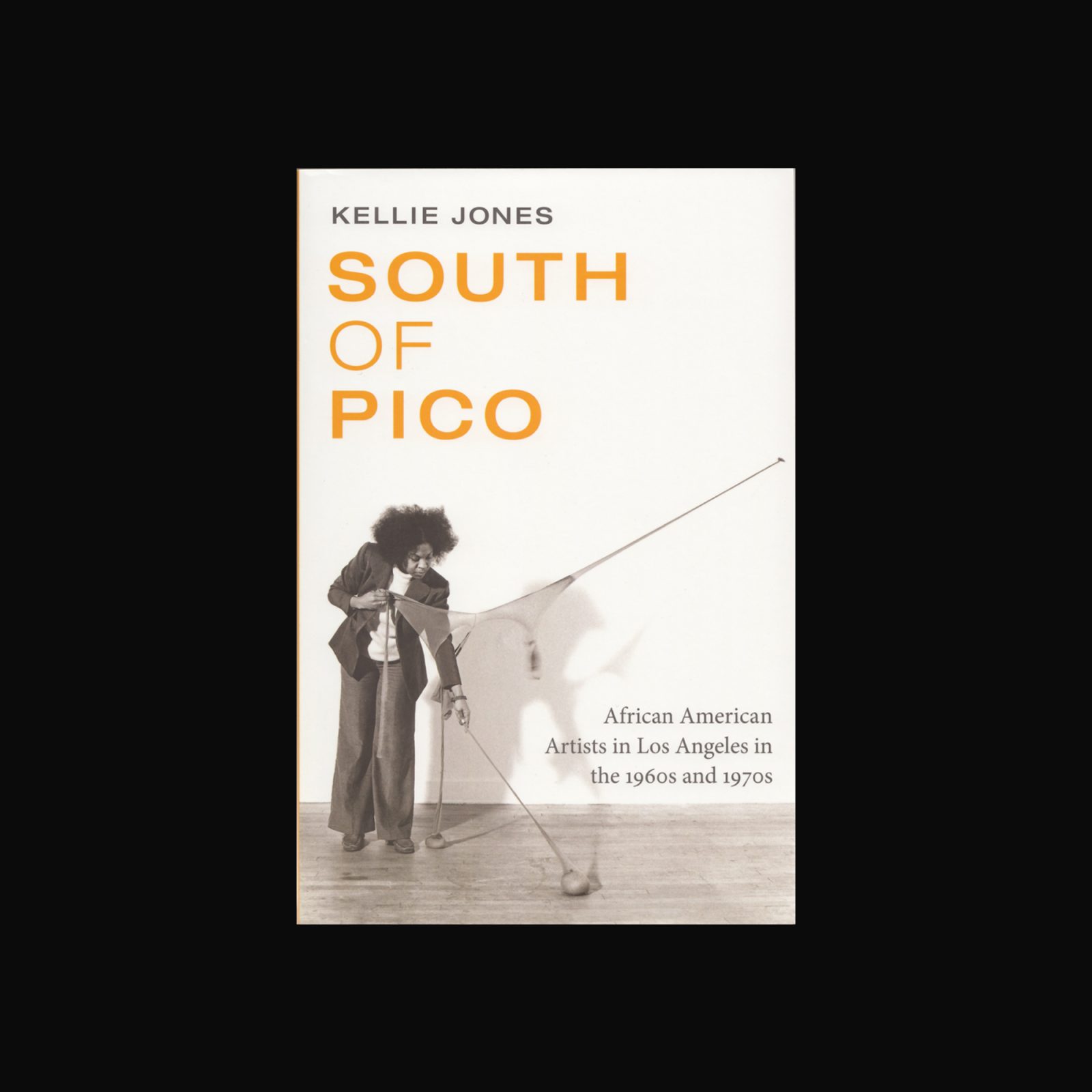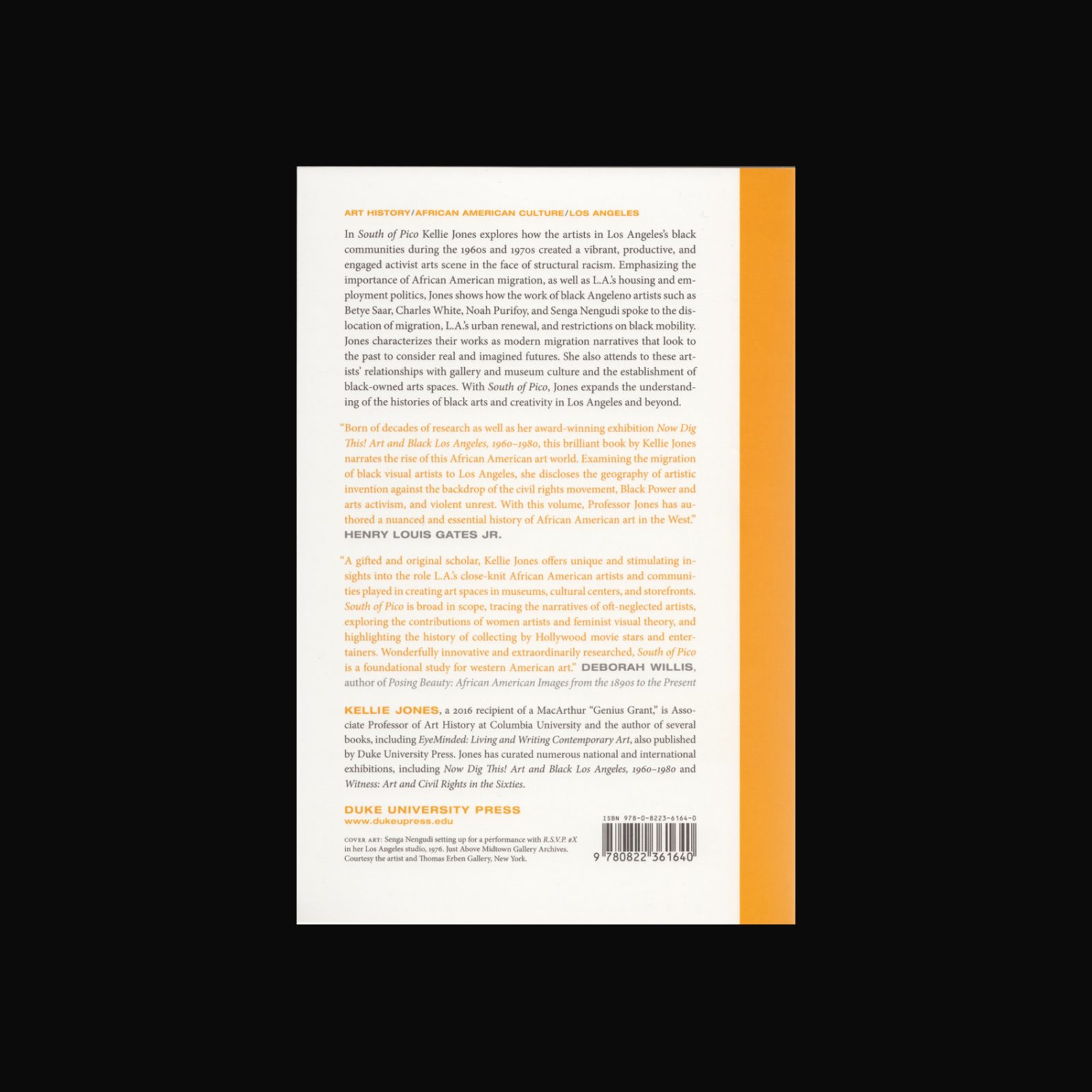For almost fifty years, Senga Nengudi (b. 1943, USA) has shaped an œuvre that inhabits a specific and unique place between sculpture, dance and performance. The publication accompanies the first solo exhibition of Nengudi in Germany at the Städtische Galerie im Lenbachhaus, Munich.
Among the bodies of work presented in the book are the Water Compositions (1969–70), interactive vinyl and water sculptures that Nengudi understood as an organic rebuttal to the reign of Minimalism; early fabric works that Nengudi strung up in the back alleys of Harlem, New York and the suggestive R.S.V.P. sculptures – performative objects made from pantyhose and materials such as sand and stone – (1976–today). With newly commissioned essays by Kellie Jones, Catherine Wood, and Malik Gaines.
